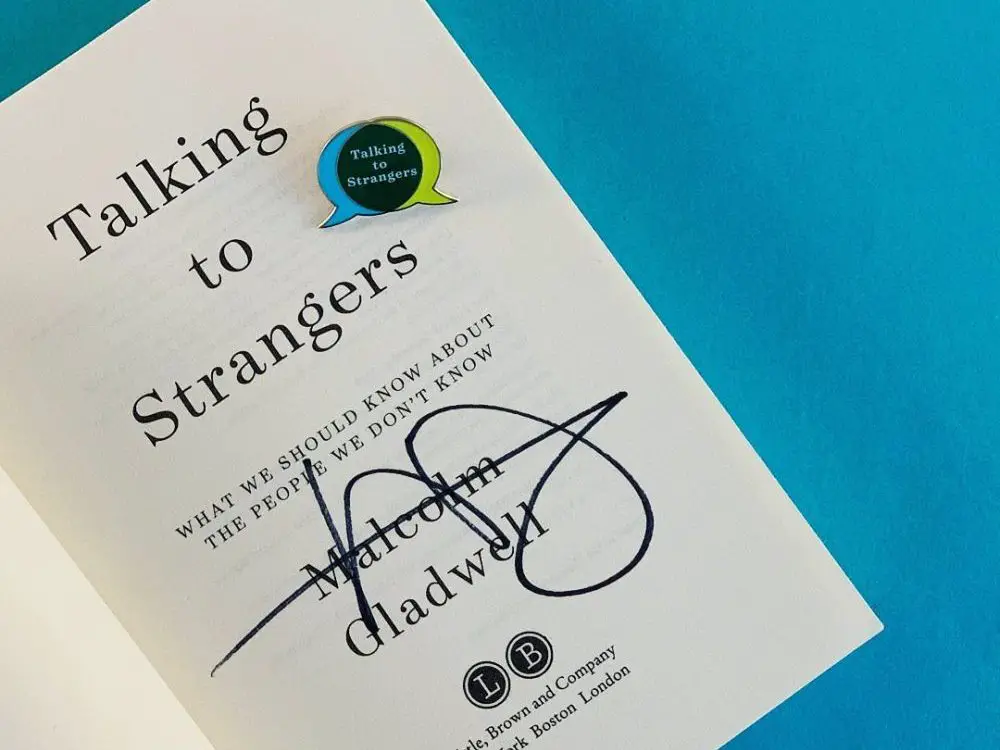Hiding your emotions around friends is no easy task. Despite your best efforts to conceal, they always seem to know when something is wrong. Strangers, however, don’t have that same advantage of understanding individual mannerisms, and that can be detrimental in some cases. In “Talking to Strangers,” Malcolm Gladwell uses real-life examples and interviews to critically analyze the tools and strategies people use to understand those they don’t know. In one chapter, Gladwell homes in on this disconnect through the lens of the sitcom “Friends.”
Gladwell and the Friends Fallacy
“Friends” is a fairly easy show to understand. The characters are (at least intended to be) likable and are based on common tropes. The settings are common and recognizable and the plot is simple. One contributor to this legibility is the way characters express emotions. In the book, Gladwell references a specific scene in which Ross discovers that Chandler and Monica are dating.
When Ross first finds out, he angrily exclaims, “My best friend and my sister. I cannot believe this.” Then, after learning that the two are actually in love, he adopts an overexaggerated smile and says, “My best friend and my sister. I cannot believe this.” Though Ross says the same line twice, his facial expressions portray how his attitude changes and how the words develop an entirely different meaning the second time around.
Gladwell argues that this depiction of emotions creates a fallacy. If you were to operate off of the assumptions “Friends” encourages, you’d expect all people to show their emotions just as clearly. A sad man would weep endlessly and a happy woman would jump for joy. However, those assumptions don’t apply to real life. People rarely show exactly how they’re feeling, especially in public spaces, and your closest friends’ mannerisms cannot be applied to strangers.
The book also discusses a study in which children from different cultures were asked to identify emotions based on facial expressions. While Spanish children were able to match the emotions with reasonable success, their peers from the Trobriand Islands had more difficulty. Only 7% correctly interpreted a scowling face as anger. This discrepancy can be owed to different cultural upbringings and different understandings of how emotions are portrayed.
Gladwell concludes that presumed transparency is a dangerous thing. Believing that all people emote the same way you or your friends do can result in a world of misunderstandings. Ross might wear his heart on his sleeve, but the same cannot be said of your boss or the barista at the coffee shop.
“Gone Girl”: A Case Study (Some Spoilers Ahead)
“Gone Girl,” a psychological thriller directed by David Fincher and based on the novel by Gillian Flynn, is the perfect example of the Friends Fallacy in action, as pointed out by Owen Shannon’s video essay. In the film, Nick Dunne returns home to find his wife Amy missing on the morning of their fifth wedding anniversary. As the cops investigate and find more questions than answers, they quickly become suspicious of Nick himself.
https://www.youtube.com/watch?v=MXz4TV90OUs&t=227s
Nick behaves in a lot of questionable ways throughout the movie. At the volunteer center meant to bring people together to search for Amy, Nick is approached by a woman who asks him to take a selfie with her. Always the people-pleaser, Nick obliges, and he even smiles in the photograph. However, he immediately regrets doing so and asks her to delete it. Here, Nick is painfully aware of the dangers of perception; if anyone saw a photo of him smiling with another woman while his wife was missing, they would treat it as an outright admission of guilt.
In another scene, Nick stands on a stage next to Amy’s missing poster. He and her parents are giving a press conference to alert the world of Amy’s disappearance. As the crowd looks on and the cameras flicker, Nick leans in next to the poster and, once again, flashes a smile. It’s an uncomfortable one; he looks visibly upset, and the smile is gone almost as soon as it appeared. You can even hear a reporter yell “smile” amid the chaos seconds before, likely contributing to Nick’s knee-jerk reaction. Still, that smile is damning.
People assume they understand Nick. They argue that they would never smile if their partner went missing, so why would he? Nick’s smile means that he is guilty. There’s simply no other explanation in their eyes. In coming to this conclusion, they ignore the facts about who Nick is as a person. He was raised as a “Southern gentleman.” Nick doesn’t know how to act or handle Amy’s disappearance, so he turns on his charm as a defense mechanism.
The smile was an instinct, not any meaningful expression of joy. After all, what do people normally do when someone is taking their picture? Regardless, as Gladwell predicts, onlookers fall directly into the Friends Fallacy. Nick’s direct portrayal of emotions is all they have to go on, and they interpret it as straightforwardly as possible. There is no room for nuance.
Real-life Implications
Gladwell’s book attempts to problematize the categories and schemata people rely on to make sense of the world. He proposes that those categories can often do more harm than good. Similarly to the logical fallacy argumentum ad populum, which treats the majority opinion or belief as the correct one, the Friends Fallacy points to a damaging level of generalization that most people engage in on a daily basis. It can be benign, though it’s often not.
Nick Dunne might be a fictional character, but he’s not the only person who was ever assumed guilty for a crime he didn’t commit. The insight that the internet and media give us into the minutiae of others’ lives can be terrifying, especially when those facts come forward in such a volatile situation as a high-profile case or trial. With predetermined schemata and the Friends Fallacy in hand, someone tweeting on their phone suddenly becomes judge, jury and executioner.
There’s no quick solution for the problem of presumed transparency. Misinterpretation of signals is an everyday occurrence, but its larger-scale counterpart calls for a new perspective: one of open-mindedness and nuance. The complexities of strangers make certain that one will never truly understand them, but Gladwell argues that this is how it should be.

















